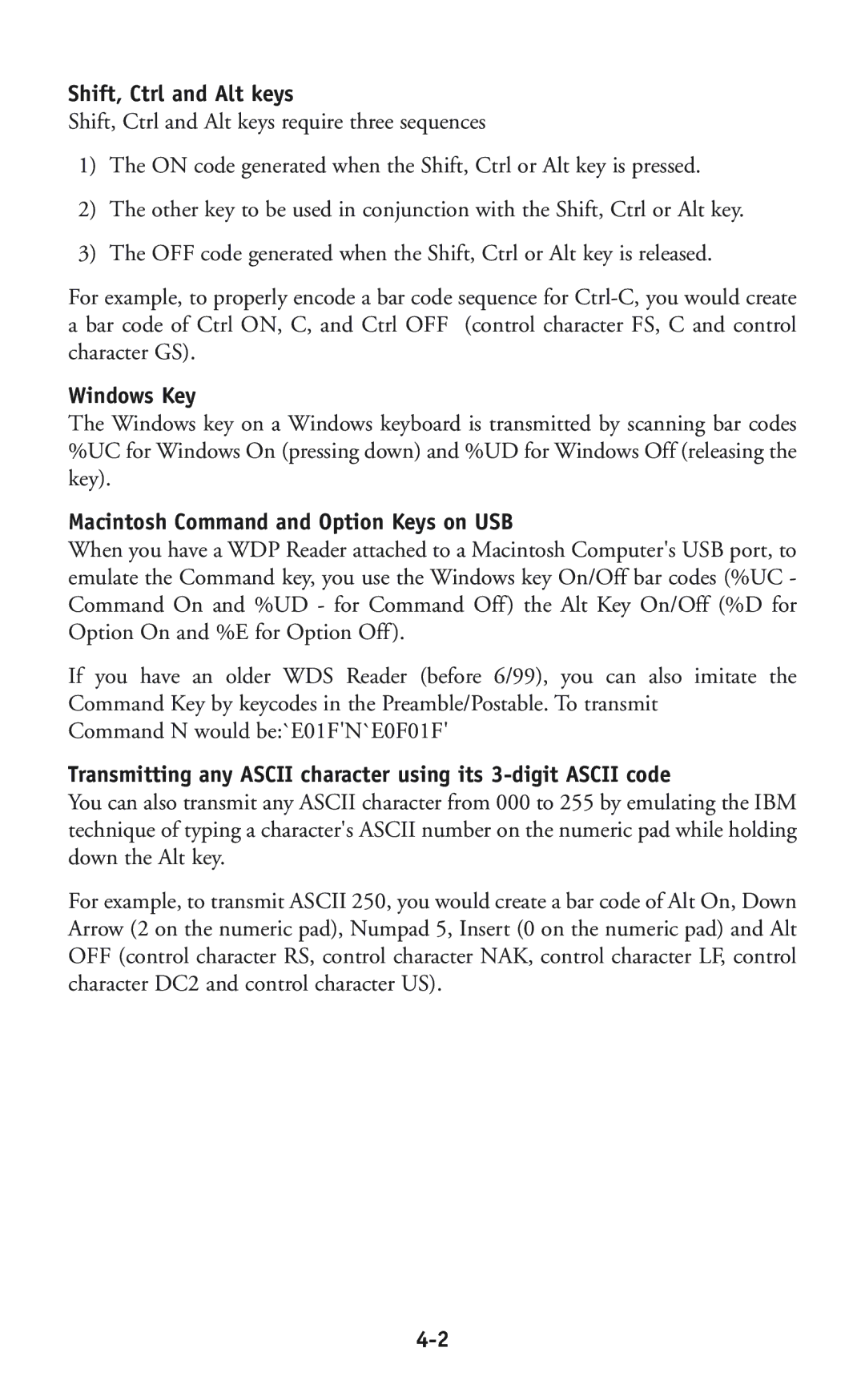Shift, Ctrl and Alt keys
Shift, Ctrl and Alt keys require three sequences
1)The ON code generated when the Shift, Ctrl or Alt key is pressed.
2)The other key to be used in conjunction with the Shift, Ctrl or Alt key.
3)The OFF code generated when the Shift, Ctrl or Alt key is released.
For example, to properly encode a bar code sequence for
Windows Key
The Windows key on a Windows keyboard is transmitted by scanning bar codes %UC for Windows On (pressing down) and %UD for Windows Off (releasing the key).
Macintosh Command and Option Keys on USB
When you have a WDP Reader attached to a Macintosh Computer's USB port, to emulate the Command key, you use the Windows key On/Off bar codes (%UC - Command On and %UD - for Command Off) the Alt Key On/Off (%D for Option On and %E for Option Off).
If you have an older WDS Reader (before 6/99), you can also imitate the Command Key by keycodes in the Preamble/Postable. To transmit
Command N would be:`E01F'N`E0F01F'
Transmitting any ASCII character using its
You can also transmit any ASCII character from 000 to 255 by emulating the IBM technique of typing a character's ASCII number on the numeric pad while holding down the Alt key.
For example, to transmit ASCII 250, you would create a bar code of Alt On, Down Arrow (2 on the numeric pad), Numpad 5, Insert (0 on the numeric pad) and Alt OFF (control character RS, control character NAK, control character LF, control character DC2 and control character US).
